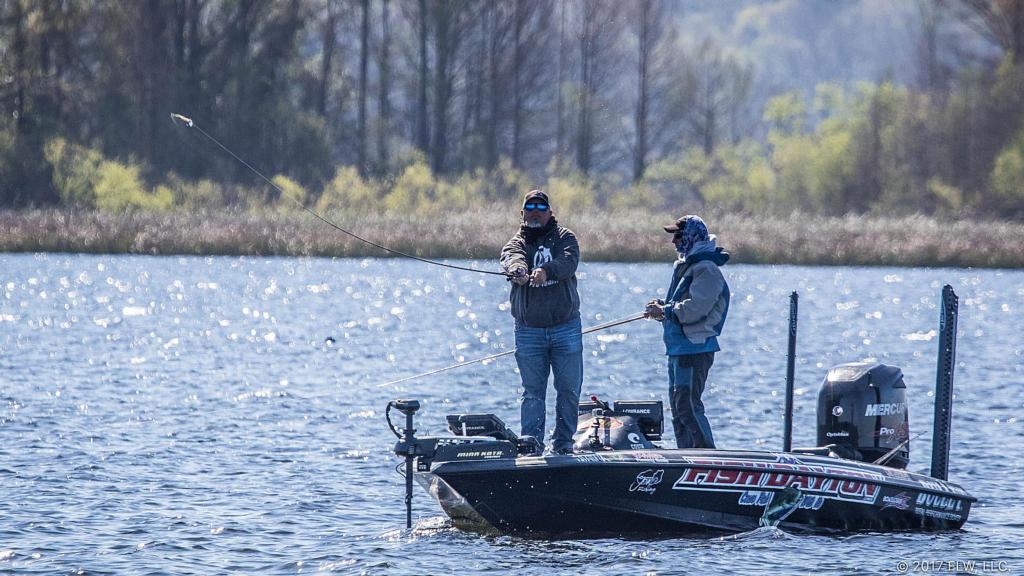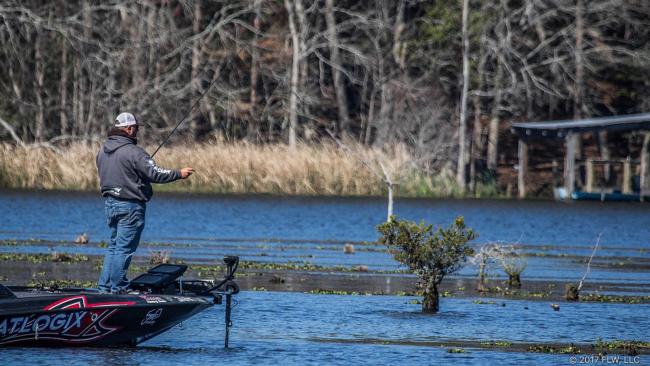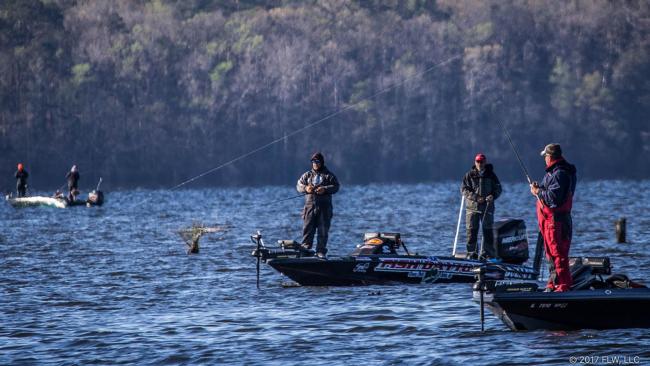Gross’ Deep-Swimbait Tackle
What the Georgia pro uses to fish deep hydrilla and timber

Georgia pro Buddy Gross earned his first Costa FLW Series Southeastern Division win recently at Lake Seminole, a victory earned by fishing a deep hydrilla edge with several pockets and cuts that bristled with standing timber.
A fish-rich scenario, for sure, this habitat presented multiple challenges, all of which Gross overcame through prudent tackle selection. Here’s the breakdown.
Grass game
For fish tucked in the grass, Gross slow-rolled a 5-inch Zoom Swimmer on an 8/0, 3/4-ounce Owner Beast Flashy Swimmer hook. He fished this on a 7-foot, 11-inch, double-extra-heavy, parabolic rod from Hammer Fishing Rods. The big stick enabled him to drive in a hefty hook at what was often the end of a long cast.
“I wanted something that would give me a good hookset from a long distance with a weedless hook in that hydrilla,” Gross says. “I had to be able to send it home, and I was using 20-pound-test Seaguar InvizX fluorocarbon, not braid, because the water was pretty clear.
“A parabolic rod hides my mistakes. And if a fish jumps or tries to spit the bait, this rod soaks up a lot of that movement and eliminates a lot of fish loss. I was throwing with the wind, so I was getting it way out there. If you didn’t have a lot of rod, you would not get a hook in them.”
Gross explains that, while the parabolic action kept him from yanking baits away from distant fish, the rod’s length and power provided the balancing strength to pull fish out of the dense grass.
“I was fishing thick, green, ‘crispy’ hydrilla in 14 feet of water, and if they did get down in there, it was a chore to get them out,” he says. “I didn’t want to have to pull up [over the grass] in the boat, so I went with a heavier rod to pull them out of the grass.”
A Daiwa Tatula CT Type-R reel (6.3:1) gave him sufficient strength and enough speed for occasional bursts mixed in with the slow-roll presentation.
Good in the wood
When he targeted the fish suspending in trees, Gross threw a Zoom Magnum Super Fluke on a 3/4- or 1-ounce Tennessee River Tackle Tremor Head. He used a 7-foot, 3-inch, extra-heavy, parabolic Hammer rod with the same reel and 17-pound-test InvizX.
Gross says the lighter line minimized the intrusion for this slower presentation, while his extensive experience with a 6.3:1 reel allowed him the confidence to keep his bait in the zone where the fish were suspending.
“I do a lot of countdown stuff, and I can tell you the depth my bait is in by my retrieve,” Gross says. “That’s just a comfort zone for me to know what depth I’m in when I’m fishing for suspended fish.
“My boat was sitting in 25 to 27 feet of water, and I was catching fish in 10 to 14 feet. That grass stopped at 14 feet, and once you reached the edge, you could keep coming off that edge and the fish would be suspended in the trees. It’s just like ledge fishing. I’d just use that grass as a ledge.”
Here, again, the parabolic rod’s forgiveness kept him in the game.
“I knew I was going to get bit when I’d come past a piece of timber, but when I first got there, I lost two good fish because my adrenaline was still flowing and I set the hook too soon,” Gross admits. “But once I calmed down, they’d get the bait good and hung on to it.
“Once the fish start to fight, the parabolic rod absorbs a lot of energy. The rod and the line do all the work for you.”

